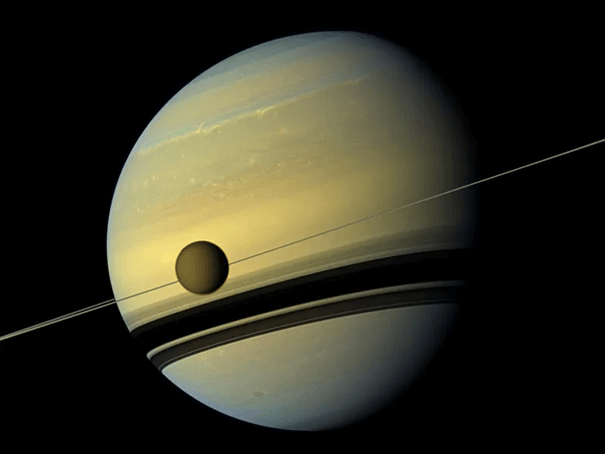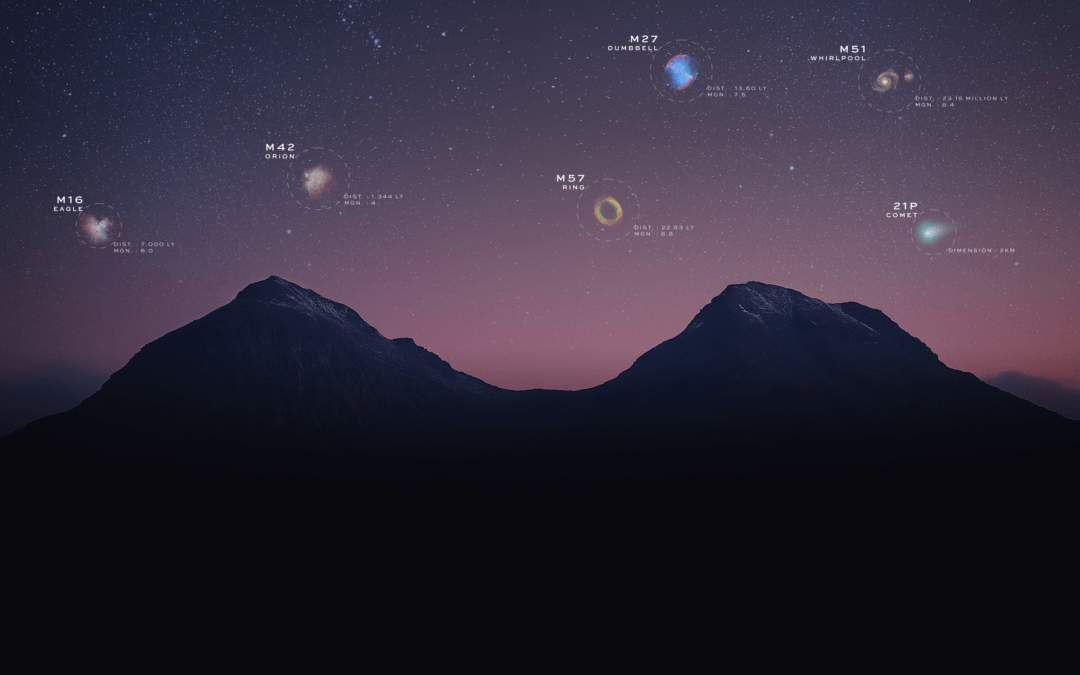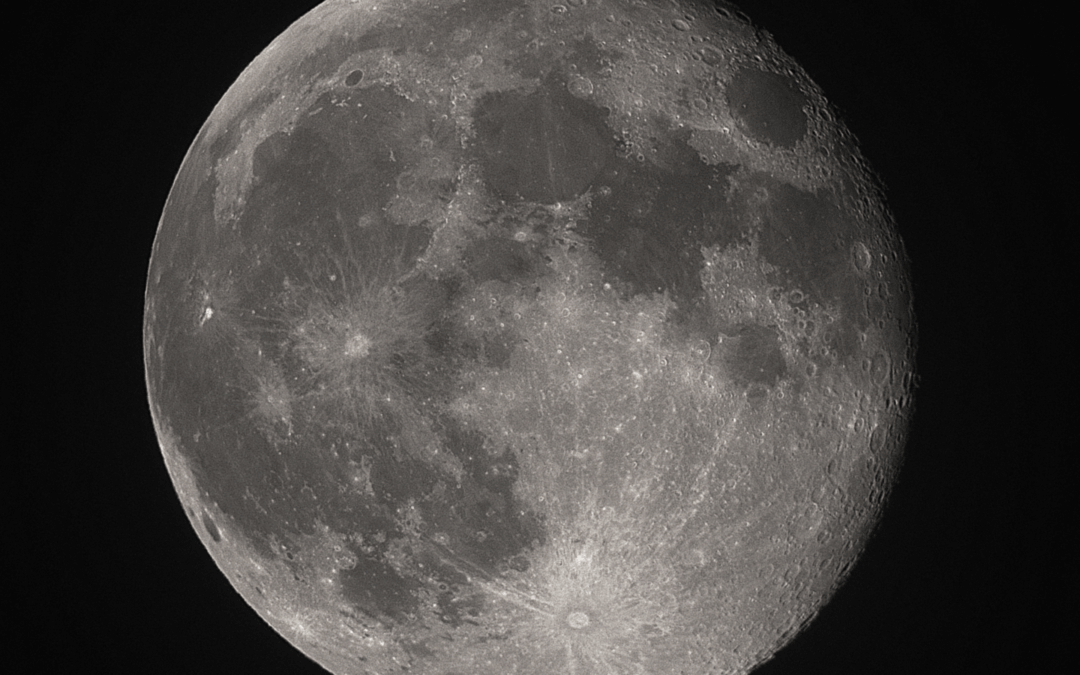There’s a new comet in our celestial arena, competing with well-known comets for “Comet of the Summer” status! This icy visitor, called C/2023 E1 (ATLAS) or “Comet E1” for short, was discovered by the Asteroid Terrestrial-impact Last Alert System (ATLAS) telescope in South Africa on March 1 of this year. It quickly caught astronomers’ attention when it brightened more rapidly than expected shortly after discovery. Comet E1 has a lot to offer both observers and professionals, so let’s take a closer look.
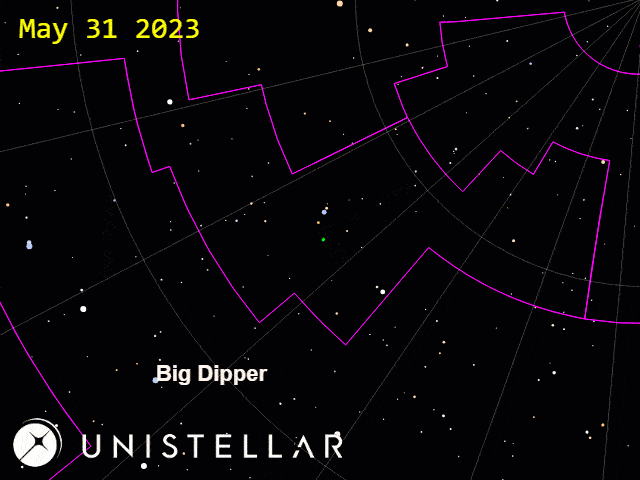
The path of this comet through the sky. Note that the tail in this graphic represents the ion tail, which is made of charged particles and always points directly opposite the Sun. Comet E1 doesn’t have a prominent dust tail right now. Credit: Tony Dunn.
A New Halley-Type Comet
You may have heard of, or even remember, the famed passing by of Halley’s comet in 1986. But this wasn’t the first and last visit of this comet, as it traverses through our skies every 75 years. In fact, that’s part of what defines a Halley-Type comet – these are comets with short periods, meaning they orbit the Sun every 20-200 years. Those short orbits are also highly elliptical, bringing them from the outskirts of the Solar System to within its inner realm where they warm and brighten quickly.
Newfound Comet E1 falls into this category of Halley-like comets, as it has a period of 85 years and should therefore visit again – but not until 2108. It already made its closest approach to the Sun on July 1, when it was one Earth-Sun distance away, but it will be closest to our planet on August 18. Right now it is at its brightest, so catch it while you can!
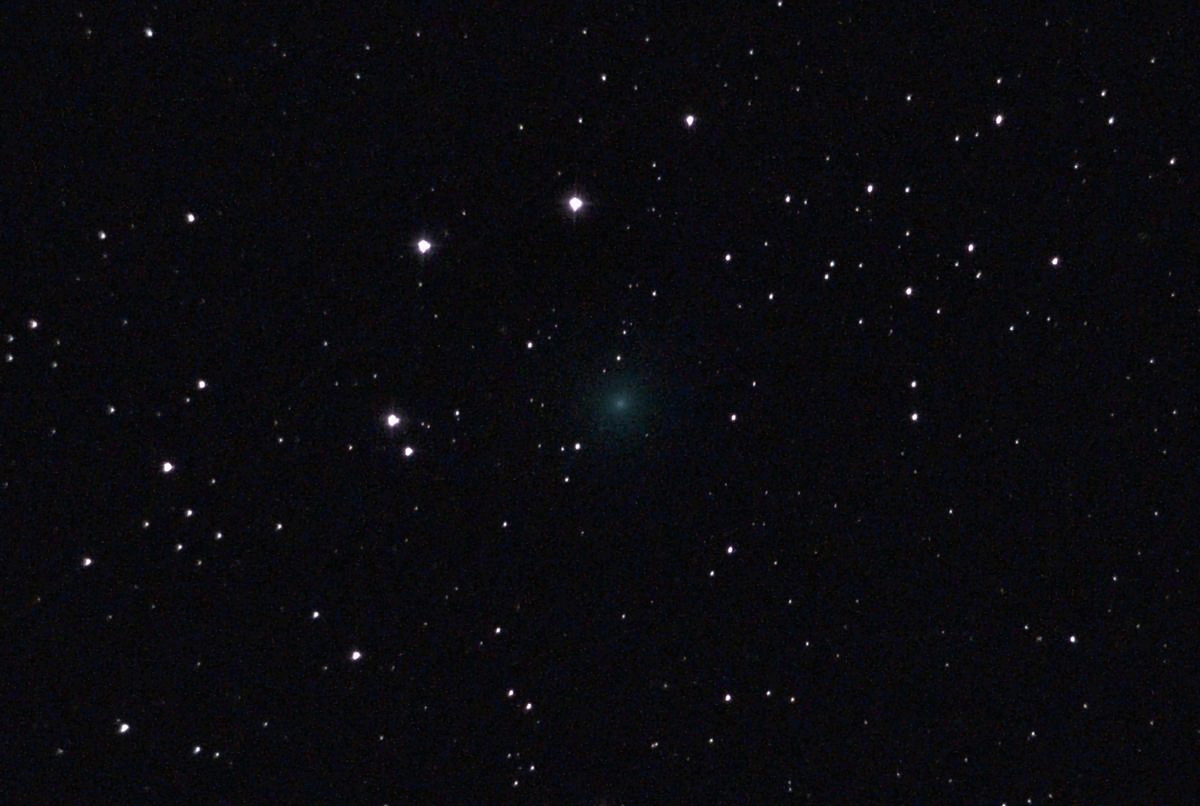
Images of Comet E1 taken by Unistellar Observer Scott Kardel (US). The observations were taken about 45 minutes apart, and show how the green comet moves over time.
Why the Green Glow?
You may notice from the images above that Comet E1 looks like a bright green ball of gas. That ghoulish green glow comes from diatomic carbon, a molecule composed of two carbon atoms, in the comet’s coma – a gas and dust mixture that surrounds the comet as ices in its nucleus, or solid core, escape the comet’s surface as it warms nearer the Sun. And the coma around C/2023 E1 is particularly spread out, making it appear as a green gassy orb floating through space.
Halley-type comets are suspected to come from the Oort cloud, the most distant region of the solar system past the Kuiper belt that hosts our beloved Pluto. Since it originates far out, it makes sense for the comet to contain such a substance that easily turns to gas – but astronomers don’t know if that gas is getting used up, and they need your help to track the comet’s activity to find out!
Sometimes a lot of gas can escape the comet at once, leading to an outburst, or rapid brightening of the comet. But unlike most comets exhibiting an outburst, Comet E1 has rapidly brightened and stayed that way! That’s another mystery this comet carries, and all the more reason that astronomers need your observations.
How You Can Observe Comet E1 with your Unistellar Telescope
Even though comet C/2023 E1 (ATLAS) was just recently discovered, you can still find it easily! Right now, it is visible to Northern Hemisphere observers, although it will become observable to the Southern Hemisphere in August. Comet E1 is not in the Unistellar App catalog, but all you need to do is visit our Comet Ephemeris Page to contribute to this mission:
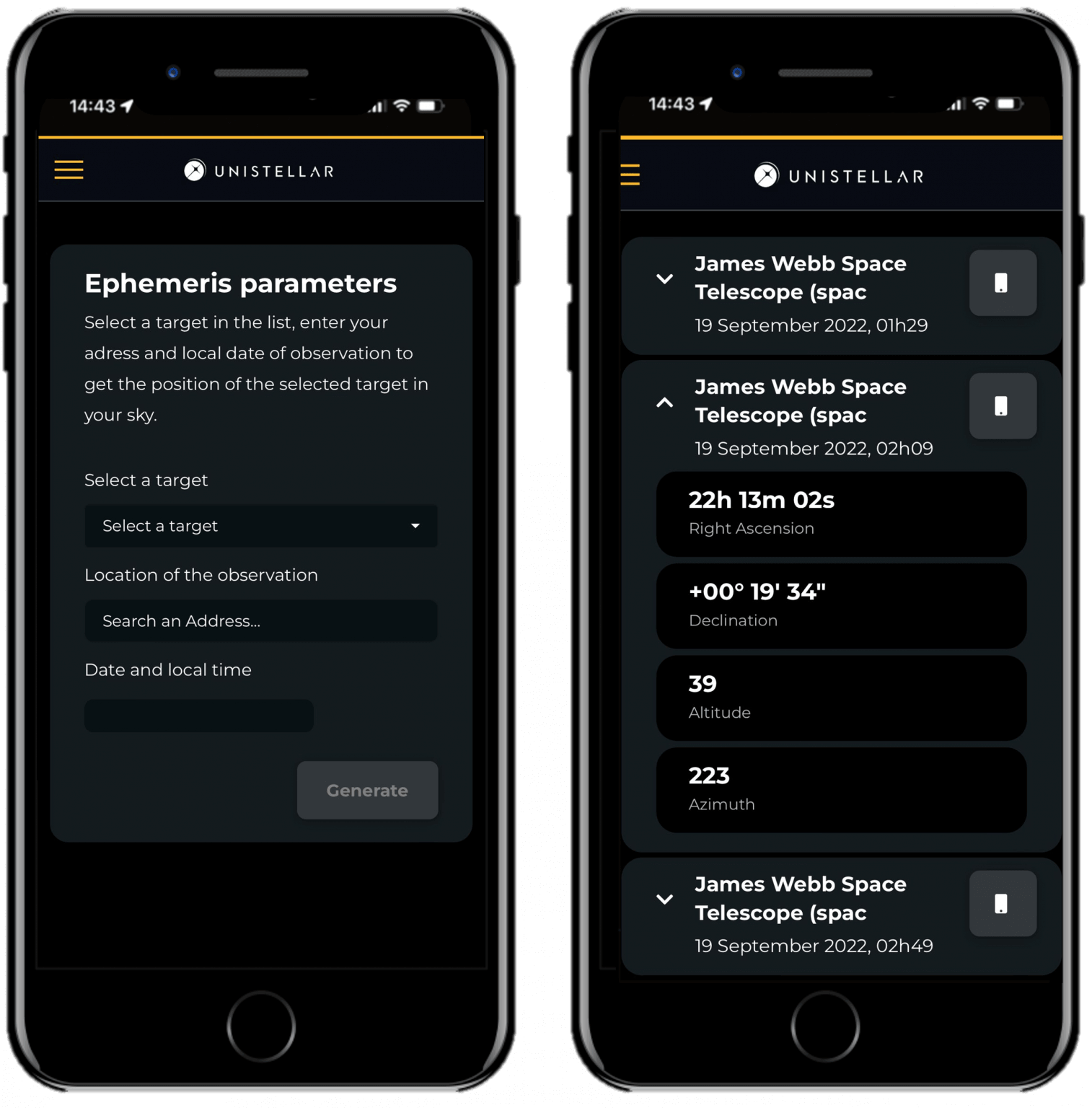
The Comet Ephemeris page will look very similar to the above image, as this is an example. Input your Ephemeris parameters as instructed above.
- Once on the page, in the Ephemeris Parameters section, select your target and enter the location where you’ll be observing, as well as the date and local time.
- Click on Generate to get your results. After a few seconds, the Ephemeris Results section will be generated with a list of celestial coordinates for your night. Each line corresponds to the position of your target at a specific time.
- If your target is visible from your location, you will be able to click on the smartphone icon (containing a Deep Link) that will open your Unistellar App and fill the Cometary Activity section with the proper fields. If your target is not visible, a crossed-out eye icon will appear.
- When you are ready to observe, access the Comet Ephemeris Page from your phone or tablet. Then, click the Deep Link for your observing time. It will automatically open the Cometary Activity tab of Science Mode in your Unistellar App. If the Right ascension and Declination box are filled with the correct coordinates, click on Goto to point to your target.
- To make a Since Observation: Once Goto is done, if the Record duration, Exposure time, and Gain are correct, you can click on Save. For this target, Record duration = 20 min, Exposure time = 3971 ms, and Gain = 25 dB.
- When you are ready, click on the Record button to start the observation.
And that’s it – you can always visit our Comets Tutorial page for more guidance on how to make your observation for this comet that is NOT in the App Catalog. If you have any questions regarding this process, direct them to [email protected]. Happy comet watching!
Further readings
Titan’s shadows
Every month, discover three unmissable celestial events to observe with your Unistellar telescope.
3 Reasons to observe this month
Every month, discover three unmissable celestial events to observe with your Unistellar telescope.
Observing Eclipses on Jupiter: Cosmic Spectacles Through a Telescope
The latest Unistellar App Update, version V3.0, is now live. Explore a smooth stargazing experience !
Unistellar Community Included In Multiple Scientific Papers
Did you know Unistellar Citizen Astronomers are often cited in published scientific papers? Find out how you can contribute too!
What Are the Names of All the Full Moons in 2024?
Discover the enchanting names of the full moons in 2024. Delve into the unique character of each lunar spectacle and embrace the allure of the night sky.
New Unistellar App Update: Version 3.0
The latest Unistellar App Update, version V3.0, is now live. Explore a smooth stargazing experience !

